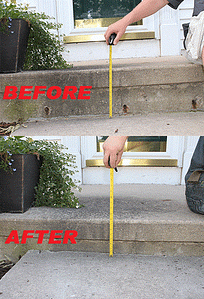Best Basement Waterproofing Fundamentals Explained
Best Basement Waterproofing Fundamentals Explained
Blog Article
The Ultimate Guide To Best Basement Waterproofing
Table of ContentsThe 4-Minute Rule for Best Basement WaterproofingThe smart Trick of Best Basement Waterproofing That Nobody is Talking AboutNot known Incorrect Statements About Best Basement Waterproofing 5 Simple Techniques For Best Basement WaterproofingThe smart Trick of Best Basement Waterproofing That Nobody is Discussing
uses excavation methods towards the bottom of the structure's structure. includes eliminating moisture after it has gotten in the basement. AdvantaClean's experienced experts and service technicians will certainly locate the water resource. If wall surface or slab fractures are existing, we will infuse polyurethane and epoxies into the splits and secure the compromise, avoiding further dampness from going into.If there's condensation outside of the aluminum foil, you have high moisture in your basement. Fix it with a portable room dehumidifier or a whole-house humidifier system as opposed to waterproofing products. If the foil has condensation on the inside surface (next to the wall), the dirt around your home might be normally damp from a high water table or poor soil drainage.
You can waterproof simply your indoor walls, which might resolve the problem. Once they dry, they stick completely to concrete and masonry wall surfaces.
The smart Trick of Best Basement Waterproofing That Nobody is Talking About
Concrete water resistant coverings can't be applied to formerly painted surface areas; examine the tag. Understood as densifiers, they are appropriate only for wall surfaces that haven't been repainted or secured.
But you clean, roll, or spray it on a lot more heavily one gallon covers simply 75 square feet, not the 300 square feet normal with typical paint. Waterproof paint is great for do it yourself application. You can apply it over repainted surface areas, and paint over it once it's cured (one gallon costs $37).
It can cost $10,000 to $15,000, depending on the job needed. Outside waterproofing involves digging deep into all around the home to the complete depth of the structure walls, after that installing a water-proof layer or membrane layer covered by drain panels.
A cellar without waterproofing is kind of like that. Your basement doesn't desire to go via a rainstorm without anchor proper security just as much as you do not desire to.
An Unbiased View of Best Basement Waterproofing
But if you've done your research, you 'd know there are two kinds of waterproofing: exterior and interior. It can obtain perplexing what they both mean, which one's a far better investment, and what will actually maintain the water out. Don't stress, we put with each other this blog to conveniently specify both approaches for you and review the pros and disadvantages of each.
Outside waterproofing is a waterproofing technique that includes sealing your home from the outside. It's sort of like a moat around a castle. It entails excavating a trench around your entire house to the structure (regarding 8 to 10 feet down). helpful hints The foundation walls are after that cleaned up, sealed, and covered with a water resistant membrane or sealer.

Best Basement Waterproofing Can Be Fun For Anyone
It's a much more engaged procedure that calls for excavating up your yard, which is pricey and time-consuming. Outside waterproofing involves getting rid of whatever bordering your home, including verandas, driveways, pathways, landscape design, AC systems, decks, and more. If any one of the job was done inaccurately and water is still entering your basement, there isn't much you can do to correct or fix it.
Interior basement waterproofing involves waterproofing from the inside. Any water that leaks into your basement is redirected before it touches your floor. It's kind of like wearing a raincoat under your clothes. It involves two things: a water drainage track and a sump pump. It works by sealing the inside of your basement walls and floors so water that tries to enter is carried out with a sump pump.
It's an effective technique to water-proof your cellar - Best Basement Waterproofing. The downside of interior cellar waterproofing primarily concerns the installation process. This method calls for stored things, furniture, and integrated shelving or closets to be relocated from touching the basement wall surfaces. And during installment, your basement can not be utilized. The biggest difference between both techniques is this: Exterior waterproofing is a preventative option and interior waterproofing is a rehabilitative remedy.
Unknown Facts About Best Basement Waterproofing
Finally, exterior and interior cellar waterproofing are dig this both efficient approaches of protecting your home from water damage. Exterior waterproofing creates an obstacle that stops water from entering your home, while interior waterproofing reroutes water that does enter your home. And it's crucial to note that outside waterproofing is a costly and disruptive installment process when contrasted to indoor waterproofing.
Whichever method you select, make certain you pick a trusted and trustworthy service provider for the work. If you have any kind of concerns concerning cellar waterproofing, please reach out to us.
You can complete our form right here, start a chat in the bottom right-hand edge, or call us at 1-800-827-0702.
Report this page